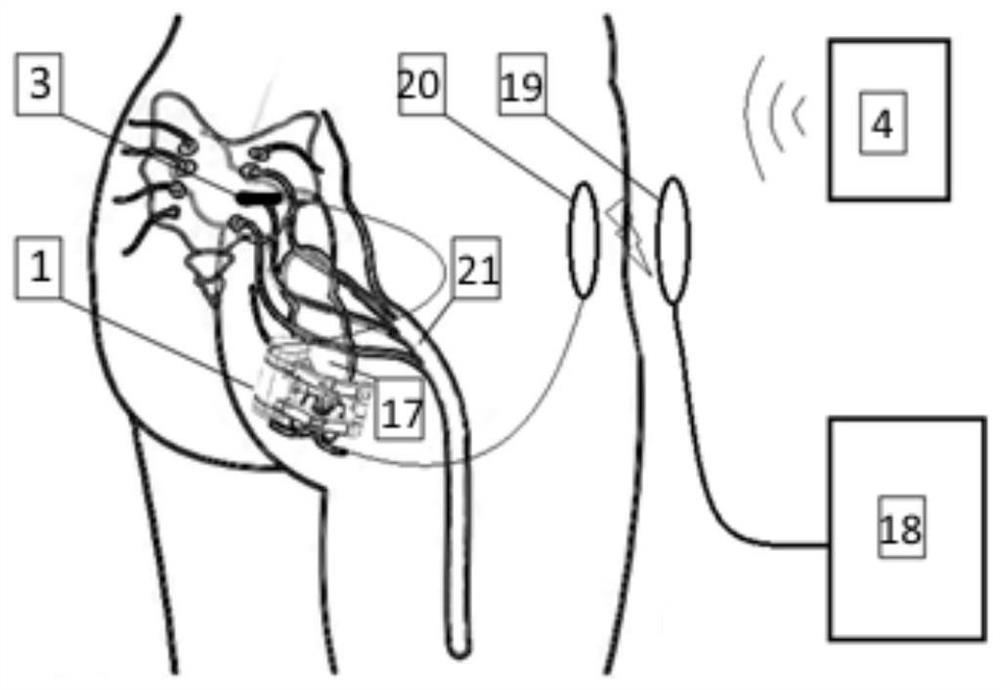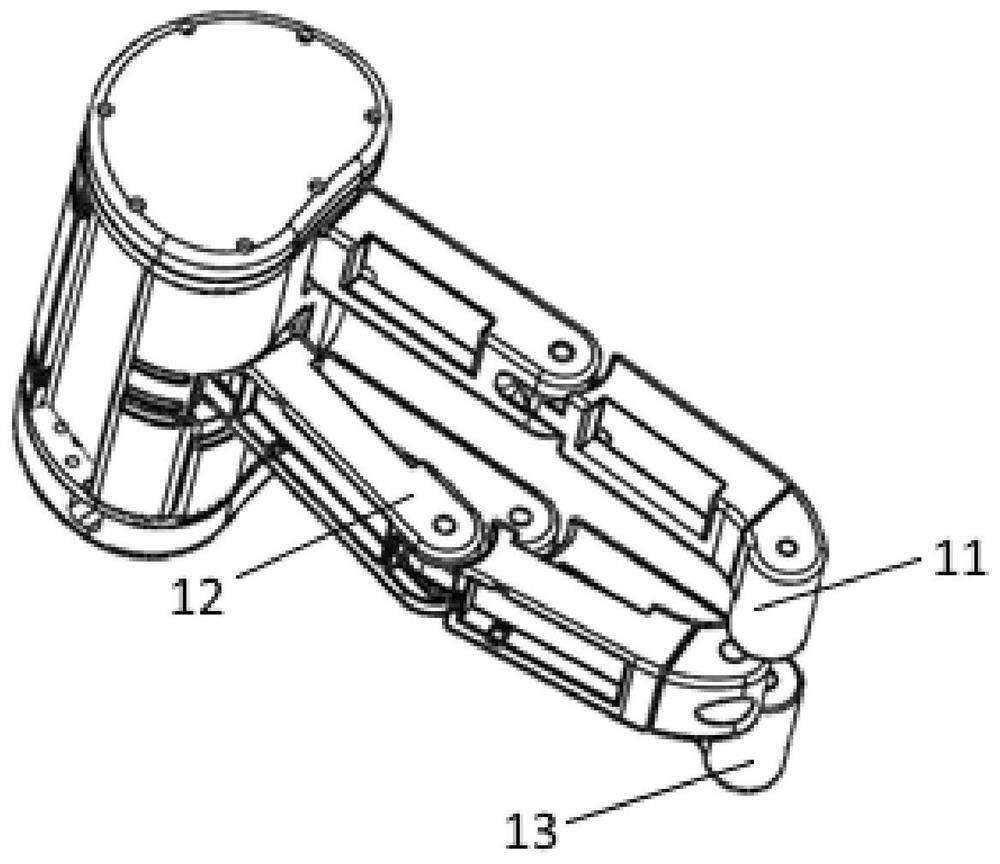In-situ implanted bionic anal sphincter system based on defecation intention function reconstruction
An anal sphincter and sphincter technology, applied in the field of medical devices, can solve the problems that the human body cannot really produce a bowel movement, lacks a physiological interface, and has no nervous system
- Summary
- Abstract
- Description
- Claims
- Application Information
AI Technical Summary
Problems solved by technology
Method used
Image
Examples
Embodiment Construction
[0015] like figure 1 As shown, this embodiment includes: artificial anal sphincter module 1, sensor detection and conversion module 2, pelvic nerve stimulation module 3, external control module 4 and external energy supply module 5, wherein: artificial anal sphincter module 1 will be acquired in vivo The pressure signal is transmitted to the sensing detection and conversion module 2 to generate an electrical stimulation intensity signal, and the pelvic nerve stimulation module 3 generates a corresponding intensity stimulation electrical signal to activate the defecation reflex nerve pathway. The external energy supply module 5 and the artificial anal sphincter module 1 The external control module 4 is connected with the artificial anal sphincter module 5 for the wearer to control the artificial anal sphincter module 1 to defecate.
[0016] The artificial anal sphincter module 1 is set in the rectum or anal canal, and includes: an actuator 6, a drive and control mechanism 7, a ...
PUM
 Login to View More
Login to View More Abstract
Description
Claims
Application Information
 Login to View More
Login to View More - R&D
- Intellectual Property
- Life Sciences
- Materials
- Tech Scout
- Unparalleled Data Quality
- Higher Quality Content
- 60% Fewer Hallucinations
Browse by: Latest US Patents, China's latest patents, Technical Efficacy Thesaurus, Application Domain, Technology Topic, Popular Technical Reports.
© 2025 PatSnap. All rights reserved.Legal|Privacy policy|Modern Slavery Act Transparency Statement|Sitemap|About US| Contact US: help@patsnap.com



